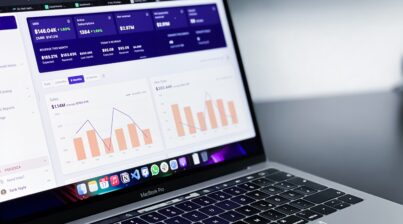We interviewed Jason Olson, the Vice President of Human Resources at Fivos – in the software development industry – to learn more about their experience with Employee Cycle’s HR Analytics Dashboard.
About Fivos
Founded in 2006, Fivos is the industry’s leading provider of comprehensive data solutions for specialty providers, medical registries, and device manufacturers. By taking a holistic approach to data capture, insights, and action, Fivos helps drive innovation, improve outcomes, and lower costs for unique clinical workflows. Vascular, cardiovascular, women’s health, and other specialties can leverage Fivos solutions to manage workflows, assess performance, measure risk, and meet regulatory markers.
Fivos focuses on three main areas of business regarding the gathering and analyzing patient data:
- Workflows: capturing patient data that has been input into systems with workflow software, and then developing insights and producing reports from that data.
- Registries: tracking patient data around specific aspects of care, such as Ear, Nose & Throat; Podiatry; and Cardiology, and then aggregating and analyzing the data specific to those patient populations.
- Industries: collecting data for medical device manufacturers, pharmacological manufacturers, and research groups, and then analyzing real-life data to understand how devices and pharmaceuticals are working in the field. The research groups then take that data to provide better patient outcomes and services.
Jason sits on the leadership team as the head of HR and all people operations. He oversees the HR teams in 26 states across the United States, Puerto Rico, and Egypt. He loves data – and Fivos provides the underlying technology to help these groups capture, report, and analyze data while maintaining proper patient privacy and data security.
Question: Organizations make technology investments based on needs. What were the needs or challenges Fivos faced prior to the Employee Cycle solution?
The traditional model with HR is a lot of paper-pushing and bureaucracy. Today, HR is adapting how they operate. We’re asking, “How do we become smarter and more responsive to the needs of staff and the business as a whole?” And at top of my mind for me is with limited staff and budgets, there is a need to ensure the HR team is deploying their efforts in the most effective way possible. Fivos didn’t have an easy way to quickly aggregate the data they needed to answer those questions or understand where the gaps were.
I knew that HR analytics were critical to helping us find the answers to questions such as:
- How efficiently are we operating?
- Where are the gaps in how we are serving our staff?
- Are we acquiring new staff quickly enough?
- How is our workforce performing?
If the time to fill a position is long, then we need to analyze why. If candidates are dropping out of the interview process, then we need to understand what is happening and at what stage. I knew we needed good data in order to deploy efforts, workload, and resources effectively.
Question: What is the most valuable feature in Employee Cycle that you use constantly?
It really depends on the audience.
When talking with the CEO and CTO, their questions focus on data around turnover rate, retaining staff, cost to hire, and how Fivos compares to industry benchmarks. They want workforce pulse checks and visually see trends from the data.
With the HR team, we focus our data pulls on diversity, pay equity, and inclusion. We want to ensure we are trending in the right direction and finding disparities to resolve quickly.
With department managers, they want to know about diversity within their teams and ensure appropriate pay ranges.
Prior to Employee Cycle, I would have to pull data from multiple HR systems, aggregate the data into spreadsheets, then create reports for the various audiences. Now, the nice thing about the Employee Cycle dashboard is that all of our data is pulled into one platform, it’s aggregated right away, and with a few clicks I can share different customized dashboards with those different audiences, with the information they want to see.
Question: What’s your reporting life been like with Employee Cycle?
Prior to Employee Cycle, at home, after I put my kids to bed, I would spend several hours at night manually doing all the data pulls and reports. Now, with the Employee Cycle dashboard, I don’t have to work at home at night and I’m getting more sleep! I save at least 5-6 hours per week in reporting.
Visualization has helped a lot for our audiences. I can present the data with nice aesthetics – unlike a scary, boring spreadsheet – and it helps me sell my story better with a graphical dashboard.
I’m also looking forward to the updates coming later this year that will provide us with more flexibility in how to work with the data.
Question: Do you feel like using Employee Cycle has allowed HR to come to the table with more data-driven contributions?
Yes – when I can present data in a way that speaks graphically and analytically, it does help to make the case for initiatives. It has made a big difference in driving forward our people operations initiatives. Traditionally, HR initiatives have been put on a lower priority compared to Sales initiatives, Marketing initiatives, or the Development of Leases. For example, with the Employee Cycle dashboard, I’m able to show costs of turnover – real costs to the company in dollars. When I request to spend a certain amount for an initiative to address the costs of turnover and show how that initiative will bring down costs, the real data on the dashboard brings more attention because I’m speaking to the bottom line.
Question: How do you feel about HR data?
I love data. It’s very important for us to use to leverage valuable initiatives. And, it’s the fiber of what we do here at Fivos. Employee Cycle truly helps us present data well, tell our story, and helps the audience visualize well. Data can make or break what you’re trying to go after and what you’re trying to say.
Data allows us to understand how we’re performing, and where the areas of growth opportunities lie. Without data, analytics, and insights, we’re just fingers in the wind trying to get it right – maybe we will; maybe we won’t.
With Employee Cycle, we can visualize and pinpoint where those areas of opportunity are for growth and improvement. It helps us make the right – and best – decisions. It helps me take limited resources and apply them in the most effective areas possible where we get the best return on investment. That’s a huge amount of value.
Question: Is there anything else we should know about your experience with Employee Cycle?
It’s been fun to interact with the Employee Cycle team and see what you’re building. I love what you’re doing and I love your focus. The value-add that you guys are bringing to HR departments is significant. I’m a big proponent of helping HR departments leverage data for better outcomes for their staff and their organizations. The more those in the HR profession as a whole go down the data path, it’s a win for everyone.
The takeaways
We’re grateful to have Fivos as a loyal customer and we love working with Jason Olson and his HR team. We look forward to providing technology upgrades in our product roadmap that ensure the Employee Cycle dashboard meets Fivos’s growing needs in the near future.
Like what you hear? Schedule your free demo with us today.












